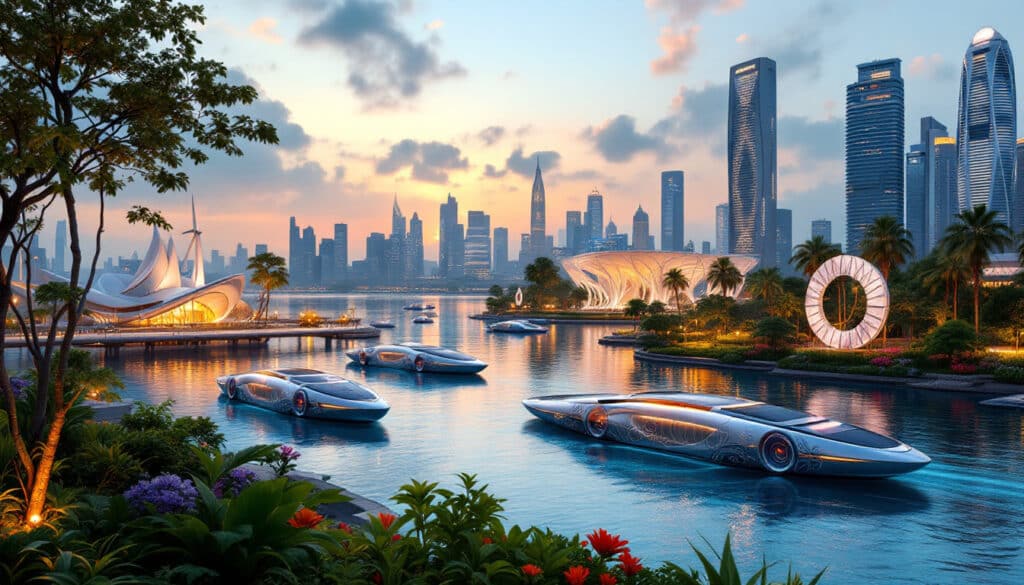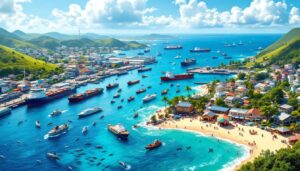Cookies play an essential role in the proper functioning of online services. They allow us to efficiently provide and maintain our services. Thanks to this data, we monitor outages and protect against spam, fraud, and abuse.
We also use cookies to measure our audience’s engagement and site statistics, which helps us understand how our services are used and to improve their quality. By choosing “Accept all,” you grant us permission to develop and refine new services, as well as to measure the effectiveness of the advertisements we display. Additionally, this allows us to show personalized content based on your settings and to offer you ads tailored to your preferences. If you choose “Reject all,” we will not use cookies for these additional purposes. The non-personalized content is influenced by the content you are currently viewing, your activity during your search session, and your location. Personalized content and ads may include more relevant results, recommendations, and tailored ads based on your past activities on this browser, such as your previous Google searches. We also adjust the experience to be appropriate for your age, if relevant. Select “More options” for additional information, including details on managing your privacy settings. You can also visit g.co/privacytools at any time.
Table of Contents
ToggleWhat is a green and digital maritime corridor between Singapore and India?
The green and digital maritime corridor project between Singapore and India represents a strategic initiative aimed at transforming maritime trade between these two nations by integrating sustainable technologies and advanced digital solutions. This corridor aims to reduce the carbon footprint of ships, improve port operational efficiency, and facilitate real-time communication and data management. By combining eco-friendly infrastructures with technological innovations, this corridor aims to establish an exemplary model of environmentally respectful and highly connected maritime trade.
The potential benefits of this corridor include a significant reduction in greenhouse gas emissions through the use of clean fuels and advanced propulsion systems. Furthermore, the integration of digital technologies such as the Internet of Things (IoT), artificial intelligence (AI), and blockchain allows for optimized container management, better traceability of goods, and enhanced security of logistics operations. This project is also part of a broader approach to regional collaboration, strengthening economic and technological ties between Singapore and India.
Moreover, this maritime corridor explores avenues for cooperation in maritime transport, as highlighted in the article from TheBlueEco. This collaboration will not only allow for the sharing of best practices regarding sustainability but also incorporate innovative solutions tailored to the specific challenges of the maritime sector.
What are the main objectives of this maritime corridor?
The main objectives of this green and digital maritime corridor are numerous and aim to create a synergy between sustainable development and technological advancements. Firstly, it aims to reduce the environmental impact of maritime transport by adopting eco-friendly practices, such as using alternative fuels, optimizing maritime routes to decrease fuel consumption, and implementing wastewater treatment technologies on board ships.
Secondly, the corridor aims to improve operational efficiency of ports and ships through the integration of advanced digital systems. The automation of port processes, smart container management, and real-time data utilization not only reduce operational costs but also accelerate transit times. This optimization translates into better competitiveness for the maritime players involved in the corridor.
Moreover, one of the key objectives is to enhance the security of maritime operations. The adoption of technologies such as blockchain for traceability of goods and AI for anomaly detection helps prevent fraud, losses, and accidents at sea. This ensures a more reliable and secure supply chain, benefiting both businesses and end consumers.
Finally, this corridor promotes international collaboration between Singapore and India, as well as with other regional actors, as mentioned in TheBlueEco. By sharing resources, technologies, and expertise, both countries can pool their efforts to achieve common goals of sustainability and innovation.
What technologies will be integrated into this maritime corridor?
The green and digital maritime corridor will integrate a range of advanced technologies to ensure its effectiveness and sustainability. One of the key technologies is the Internet of Things (IoT), which will connect various devices and systems on board ships and in ports. With IoT, it will be possible to monitor in real-time engine performance, weather conditions, and the location of containers, thus optimizing operational management.
Additionally, artificial intelligence (AI) will play a crucial role in analyzing data collected by IoT devices. AI can predict maintenance needs of ships, anticipate delays due to weather conditions, and optimize navigation routes to reduce fuel consumption. These forecasting and optimization capabilities will help improve the reliability and efficiency of maritime operations.
Blockchain will also be used to ensure transparent and secure tracing of goods throughout the supply chain. By recording each stage of container transit in an immutable way, blockchain helps reduce fraud and loss risks, while improving trust between different stakeholders.
Furthermore, eco-friendly propulsion systems will be implemented to decrease greenhouse gas emissions. The use of alternative fuels, such as hydrogen or biofuels, as well as the adoption of hybrid or electric propulsion technologies, are essential to make maritime transport more environmentally friendly.
These technologies will be complemented by smart port infrastructures, equipped with automated container management devices and advanced communication systems. These innovations enable smooth coordination between the various components of the maritime network, thus ensuring a harmonious and efficient operation of the corridor.
What are the expected benefits for maritime businesses?
The implementation of a green and digital maritime corridor offers numerous benefits for businesses in the maritime sector. Firstly, the adoption of advanced technologies allows for optimization of operational costs. The automation of processes, efficient resource management, and reduced fuel consumption translate into substantial savings in the long term. Businesses can then reinvest these savings into innovation and expansion of their activities.
Furthermore, this corridor promotes better risk management. By using AI to anticipate potential issues and blockchain to secure transactions, businesses can minimize the risks of operational disruptions and fraud. This increased security helps enhance trust among business partners and customers, thus contributing to a positive reputation and sustained growth.
Moreover, maritime businesses will benefit from an improvement in competitiveness in the global market. By adopting eco-friendly practices and cutting-edge digital technologies, they can stand out from their competitors and meet the growing demands for sustainability and transparency. This advantageous positioning opens new business opportunities and facilitates access to new markets.
Additionally, the digital maritime corridor allows for better traceability and visibility of goods. Businesses can track the progress of their shipments in real-time, optimize inventory management, and enhance customer satisfaction through shorter and more reliable delivery times. This increased transparency also helps quickly identify and resolve any logistical issues.
Finally, this corridor fosters a strengthened collaboration among different stakeholders in the maritime sector. By sharing data and resources, businesses can develop common solutions to shared challenges, stimulate collective innovation, and create a more resilient and adaptable maritime ecosystem in response to market changes.
What challenges must be overcome to establish this corridor?
The establishment of a green and digital maritime corridor between Singapore and India faces several challenges that must be overcome to ensure its success. One of the main obstacles lies in integrating technologies. Implementing advanced digital systems and eco-friendly infrastructures requires significant investments and close coordination among various stakeholders, including governments, businesses, and technology providers. It is essential to ensure that these systems are compatible and interoperable to avoid malfunctions and optimize their effectiveness.
Another major challenge concerns training and skill development for maritime personnel. The adoption of new technologies necessitates a skilled workforce capable of using and maintaining them. Businesses must invest in training and professional development programs to ensure their employees possess the necessary skills to operate in this new digital and sustainable environment.
The security of data also represents an important concern. With increasing connectivity and massive data collection, it is crucial to protect this information from cyberattacks and hacks. Implementing robust security protocols and data protection measures is essential to safeguard the privacy and integrity of the information exchanged and stored.
Moreover, there are regulatory and legal challenges to overcome. Maritime corridors operating at the international level must navigate a complex terrain of varied regulations and legislations among countries. Harmonizing standards and policies between Singapore and India, as well as with other potential partners, is essential for ensuring a smooth and coherent implementation of the corridor. This includes standardizing environmental practices and data management, as well as creating legal frameworks that favor innovation and sustainability.
Finally, it is necessary to gain the support of all stakeholders involved. Maritime businesses, port authorities, governments, and local communities must be convinced of the corridor’s benefits and be ready to actively collaborate. Transparent communication, appropriate incentives, and a clear demonstration of tangible benefits are essential to obtain the necessary support and engagement for the success of this ambitious project.
What are the long-term perspectives for this maritime corridor?
The long-term perspectives for the green and digital maritime corridor between Singapore and India are promising and could serve as a model for other similar initiatives worldwide. As technologies evolve and awareness of sustainability’s importance increases, this corridor could become a central pillar of global maritime trade, facilitating more environmentally friendly and efficient exchanges.
In the long term, this corridor could foster continuous innovation in the maritime sector. By establishing an infrastructure dedicated to green and digital technologies, businesses will be able to experiment with and adopt new solutions, thus stimulating a virtuous circle of innovation and sustainable development. This could include advancements such as autonomous ships, hybrid energy systems, and advanced data management platforms.
Additionally, the maritime corridor could significantly contribute to the reduction of global greenhouse gas emissions. By adopting eco-friendly practices and optimizing maritime routes, it is possible to decrease the carbon footprint of maritime transport. This reduction would contribute to global climate change mitigation goals and reinforce maritime businesses’ commitment to environmental responsibility.
The corridor could also strengthen economic and political ties between Singapore and India, as well as with other partner countries. By creating a network of cooperation and technological exchange, this corridor could enhance economic stability and strengthen strategic alliances in the region. This could open the door to future collaborative projects in other areas, such as renewable energy, information technology, and maritime security.
Finally, the success of this maritime corridor could inspire other regions of the world to adopt similar initiatives, thus promoting a global trend towards greener and smarter maritime trade. Regions like the North Atlantic, already active in protecting marine ecosystems, could draw on the lessons learned from this corridor to develop their own sustainable solutions, as indicated by TheBlueEco.
How will this corridor impact the regional economy?
The green and digital maritime corridor between Singapore and India will have a significant impact on the regional economy, by stimulating economic growth, creating jobs, and strengthening local infrastructures. Firstly, the enhancement of port infrastructures and the adoption of advanced technologies will attract significant investments to the region. These investments could lead to the construction of new terminals, modernization of port equipment, and the development of research and development centers dedicated to maritime technologies.
Furthermore, this corridor will promote the creation of jobs in various sectors related to maritime transport, information technology, and environmental sustainability. Local businesses will benefit from new job opportunities in specialized fields such as IoT system maintenance, maritime data analysis, environmental logistics management, and the design of eco-friendly ships. This diversification of professional opportunities can also contribute to the training and upskilling of the local workforce.
Additionally, the optimization of trade exchanges through this maritime corridor will reduce logistical costs for regional businesses. Improved port operation efficiency and optimized container management will decrease delivery times and transportation costs, making regional products more competitive in the international market. This could also encourage the expansion of local businesses into new markets, thus fostering sustainable economic growth.
Moreover, the corridor will contribute to strengthening the economic resilience of the region in the face of global challenges such as fluctuations in fuel prices, supply chain disruptions, and the impacts of climate change. By diversifying energy sources and optimizing transport routes, businesses will be better equipped to adapt to changes and maintain economic stability.
Finally, this corridor can have a ripple effect on other sectors of the regional economy. For instance, the development of digital and eco-friendly infrastructures can stimulate innovation in related fields such as renewable energy, marine biotechnology, and financial services tailored to maritime trade. This synergy between different sectors can strengthen the entire regional economic ecosystem, creating a dynamic of integrated and sustained development.
What environmental initiatives will be implemented?
As part of the green and digital maritime corridor, several environmental initiatives will be implemented to minimize the ecological impact of maritime transport and promote sustainable management of marine resources. One of the main initiatives is to adopt alternative and cleaner fuels to reduce greenhouse gas emissions. The use of biofuels, hydrogen, or synthetic fuels significantly decreases the carbon footprint of ships while maintaining their energy efficiency.
Moreover, hybrid and electric propulsion technologies will be integrated into ships to optimize fuel consumption and reduce polluting emissions. These systems allow for a combination of traditional engines with electric motors, providing greater flexibility and reduced energy costs. The use of high-performance batteries and advanced energy management systems is also planned to maximize ship efficiency.
Another key initiative is the establishment of wastewater management systems on board ships and in ports. These systems enable the treatment and recycling of used water, thus reducing marine pollution and preserving the quality of aquatic ecosystems. In addition, air purification technologies and emission filtration systems will help limit the release of atmospheric pollutants, contributing to a healthier environment for coastal communities.
The maritime corridor will also encourage the protection of sensitive marine areas by establishing strict regulations on industrial activities and promoting environmentally friendly practices. Collaboration with environmental protection agencies and research groups will facilitate monitoring and preserving marine habitats, ensuring biodiversity and resilience of marine ecosystems against climate change.
Moreover, eco-friendly port infrastructures will be developed to accommodate eco-friendly ships and facilitate the use of sustainable technologies. These infrastructures will include charging systems for electric ships, facilities for storing alternative fuels, and zones dedicated to marine waste management. The integration of these environmentally friendly infrastructures will help reduce the negative impacts of maritime transport on local ecosystems.
Finally, the maritime corridor will implement awareness and training programs to encourage stakeholders in the maritime sector to adopt sustainable practices. Educational initiatives and training sessions will disseminate best practices in environmental management, raise awareness of ecological issues, and encourage green innovation across all maritime operations.









